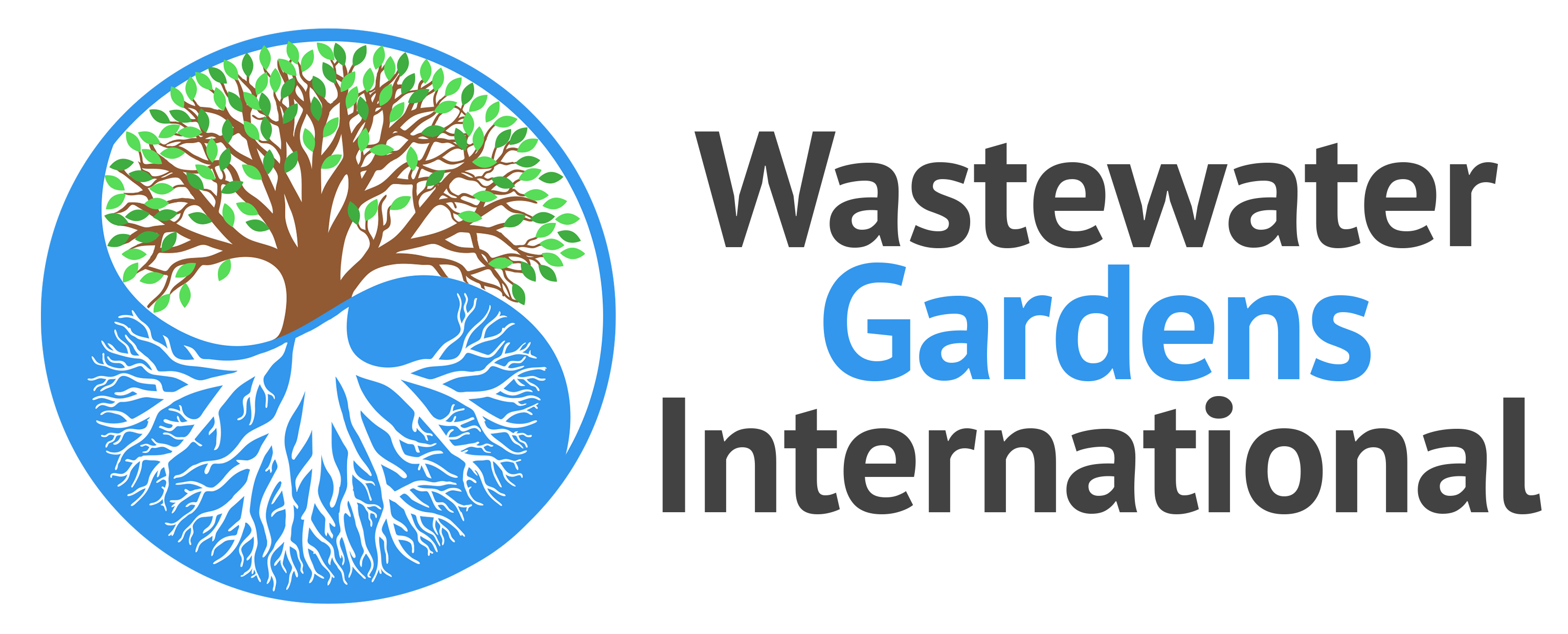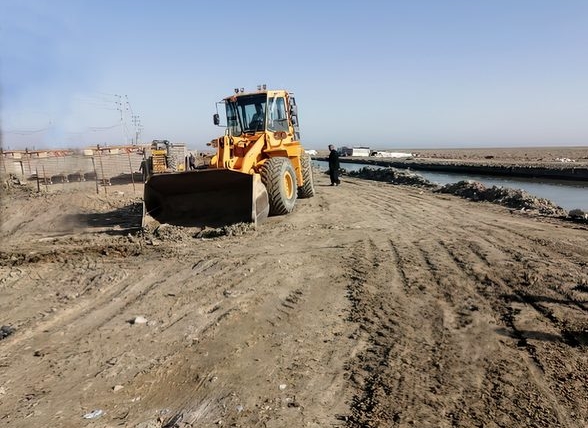Ojo de Agua in Jalisco, Mexico to install Wastewater Gardens for its sewage treatment
In November, 2022, the Sunrise Rotary Club of Chapala, Jalisco, Mexico signed an agreement with Wastewater Gardens International for the design of a Wastewater Gardens system to treat and reuse the wastewater from Ojo de Agua, a nearby village.
The design is being done by Dr. Davide Tocchetto and Dr. Mark Nelson. The system will provide ecological wastewater treatment for the village’s current population of around 300 residents and its expected increase to around 600 people.
Currently, the sewage pipe from Ojo de Agua carries raw sewage to Lake Chapala, Mexico’s largest freshwater lake, polluting its waters. The design calls for a robustly sized septic tank followed by a two-cell Wastewater Garden. The climate is humid subtropical with dry winters and rainy summers, with an annual rainfall of 880 mm (34 inches).
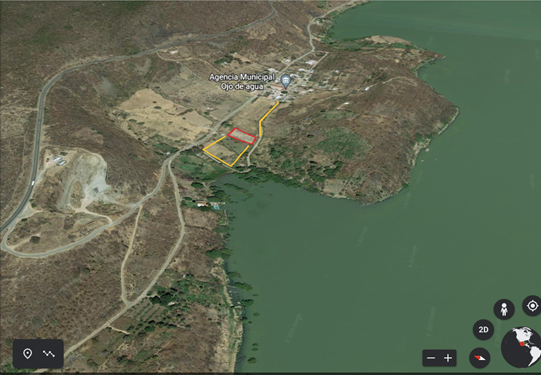
Google Earth image of Ojo de Agua Village, sewage pipeline to Lake Chapala and area for WWG system
Plants in the Wastewater Garden will probably include cala lilies, argarpandas. horsetails, agarpanthus, plantanillo (canna indica), lirio amarillo, heliconia and strelitzia, ginger, papyrus, banana and papaya (wetland tolerant species), black magic, oleanders, iris (Iris pseudacorus) and water lotus
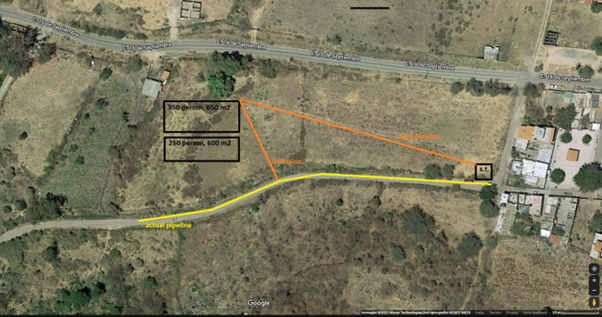
Aerial photograph with existing sewage pipe from Ojo de Agua that empties into Lake Chapala in yellow, orange lines for how we might bring it to the WWG system.
One of the design challenges is that during the rainy season, the area where the WWG system will go is inundated with rain and by the rise in Lake water levels. Our design will include contour berms to ensure that rain runoff doesn’t enter the WWG system treatment area.
Some of the treated water will be used by a farm nearby and a green zone possibly including a shallow pond and wetland-adapted shrubs and trees.
It is anticipated that construction will begin by spring or summer 2023.
The project showing a low-cost and ecological way to prevent further pollution and to begin the restoration of Lake Chapala is extremely significant.
“The largest natural lake in Mexico and one of the largest in Latin America, Lake Chapala is a unique and ancient lake ecosystem, one of the oldest on the planet. The Lake hosts a diverse range of species and provides crucial environmental services for forestry, agriculture, urban areas, and a significant boost to the local economy through tourism.
Located in Western Mexico, Lake Chapala spans across the states of Jalisco and Michoacán. Despite its importance, the lake faces various challenges that threaten its ability to continue providing its environmental services relied upon by nearly 5 million people. Unfortunately, Lake Chapala is affected by many of the problems faced by the world’s lakes, both on a local, regional and global scale.”
In other Lake Chapala news:
An international forum lays the foundation for an Action Plan to restore Mexico’s largest lake
The promotion of traditional knowledge and practices, the encouragement of crops that require less water, and the need to strengthen water stewardship, are some of the key actions needed to address the crisis of Lake Chapala, the largest in Mexico. An international symposium held in the city of Guadalajara in March 2023 set the foundation to start building an Action Plan that articulates these proposals, and that will ultimately be presented to local and national decision-makers and stakeholders.
The “International Symposium and Public Forum Lerma-Chapala Basin: Solutions for a territory in crisis” was jointly organized by the Corazon de la Tierra Institute and ITESO (Universidad Jesuita de Guadalajara) as part of the Living Lakes Biodiversity & Climate Project. It brought together representatives from civil organizations, academics, specialists, students, and local farmers living in the Sierras of Chapala, alongside 53 experts from Brazil, Colombia, the Philippines, Guatemala, Japan, Germany and Mexico. This interdisciplinary space served as a platform for action-oriented dialogue and collaborative problem-solving.
Lake Chapala is a crucial habitat for hundreds of plant and animal species and provides key environmental services for forestry, agriculture and urban areas – nearly 5 million people living in the region get their drinking water from the lake.
During the symposium, key issues concerning the management of the Lake and its basin were addressed, and 10 thematic roundtables were held, resulting in approximately 100 lines of action to counter threats and restore the health of Lake Chapala. Discussions focused on land use planning, pollution control, biodiversity management, water management effectiveness, environmental education, sector coordination, community participation, and conflict management.
The symposium set the stage to build an Action Plan for the restoration of Lake Chapala, including a series of proposals for managing the basin that decision-makers and sectors involved in management can use. These proposals should take into account the local complexity and peculiarities of the basin, and they include:
- Encourage crops that take less water and are drought-resistant, to adapt to climate impacts.
- Enforce water regulations, concerning both surface and groundwater use.
- Strengthen a culture of stewardship around water management and use, as well as for the conservation of the basin that is the source of freshwater for the recharge of wells, rivers and Lake Chapala.
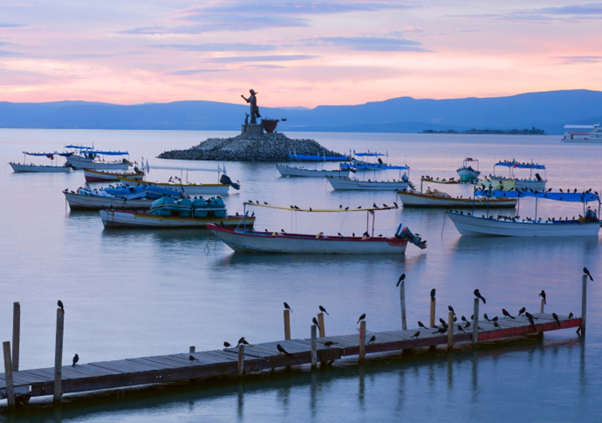
A healthy Lake Chapale means more economic activity for sectors such as tourism. Picture: Instituto Corazón de la Tierra
A common vision for Lake Chapala
During the symposium, Masahisa Nakamura, Executive Director of the International Lake Environment Committee Foundation, emphasized that lake problems must be addressed from a governance perspective, focusing on information, public policies, social participation, institutional strength, financing mechanisms, and technology.
Thomas Schaefer, Head of the Conservation Unit of the Global Nature Fund, highlighted the global significance of Lake Chapala, and how the Living Lakes Biodiversity & Climate Project will boost the conservation of these precious ecosystems around the world, with actions planned until 2027 in three continents.
At the closing ceremony of the symposium and public forum, the academic Agustín Verduzco committed ITESO’s Permanent Seminar on Water Studies to producing scientific and technical knowledge on water, collaborating in the design of public policies that incorporate the human right to water, and prioritizing communication of produced knowledge.
The Executive Director of Instituto Corazón de la Tierra, Alejandro Juárez, highlighted the need to strengthen existing networks, link community actors and the rural and urban population, address concrete problems with a common vision, and maintain the link between research and management actions, strengthening policies and institutions.
The Living Lakes Network is an international partnership of 130 members working in more than 60 countries to protect and restore the lakes and wetlands of the world.
Copyright © 2022 Living Lakes
